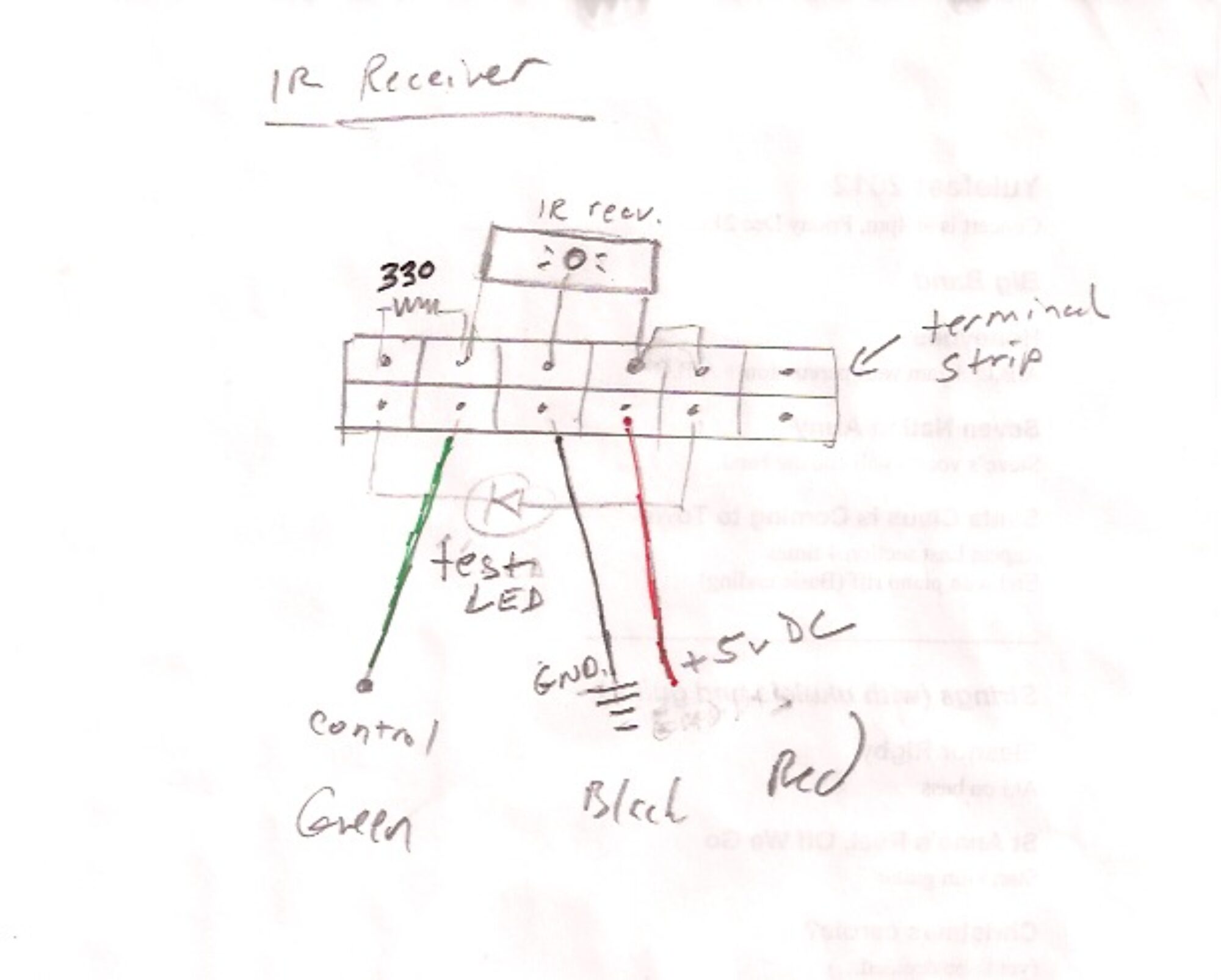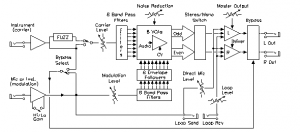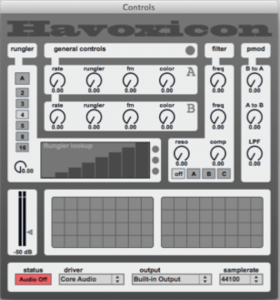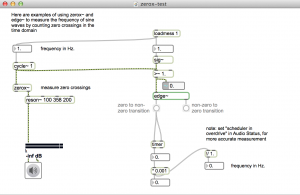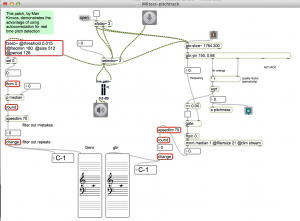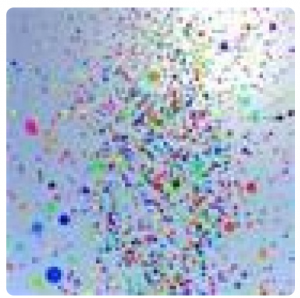By Craig Anderton at PAIA
Havoxicon
Based on the Rungler
By jvkr
note: 6/2021 – this link goes the the jvkr main page, not the Havoxicon
Max source: http://cycling74.com/forums/topic/sharing-is-rungling-stepped-havoc-in-gen/
ep-413 DSP week 5
Assignment:
Composition: Sound-byte
- The sound-byte is a short audio clip of speech.
- The speech can come from anywhere. Something familiar, something famous, something unusual.
- Every sound in the composition is derived only from the sound-byte. You can use any tool or method.
- The sound-byte in its original form should occur somewhere in the piece
- Duration: roughly 2-3 minutes? That is up to you.
Pitch tracking in Max
Two methods, In the time domain.
Counting zero crossings, in the time domain, to measure the period and frequency of a sine wave, using zerox~ and edge~
A patch by Mari Kimura that compares the Max fzero~ object with the IRCAM gbr.yin~ object – measuring frequency in the time domain. gbr.yin~ uses autocorrelation.
Note: gbr.yin~ is part of the FTM package. Download and install from here: http://ftm.ircam.fr/index.php/Download
download
https://github.com/tkzic/max-projects
folder: pitch-tracking
patches:
- zerox-test.maxpat
- MKtest-pitchtrack.maxpat
ep-413 DSP – week 3
Composition tools
Make music using X
“Lyrebirds and Acoustic Guitar” by Chris Lopez
Tools used by students in this class:
- Reverse engineering the style of a reference song. Use a Midi keyboard + Logic
- Maschine + microphone
- Modular synth + Midi
- Listening to melodies in your head + Ableton Live
- Building a chord progression, playing piano, guitar, Ableton Live racks
- Composing with drums in Ableton Live. Building a form or structure. Using the ideas in your head.
- Ableton Live. And playing the guitar.
- Finale music notation software.
Dramatic shape:
Every performance has a dramatic shape. That is, excitement level measured over time.
What is the shape of this piece:
References:
- “Gems” by Matthew Fields https://reactivemusic.net/?p=17176
Notes:
Like stories, songs have beginnings, endings, and journeys that connect. Many forms can be applied, but the goal is always the same – to have maximum impact on the listener – to communicate honestly with strength and conviction.
As you listen to music, be aware of the form – especially in terms of the dramatic shape. Where is the peak of intensity? Does the music grab your attention immediately, or does it build slowly? How much repetition do you hear? Can you find suspense, surprise, humor, sadness, power, or beauty? What musical elements work together to create these feelings?
The most powerful tools you have as a composer are your ears.
libsamplerate
ep-413 DSP – Syllabus
Digital Signal Processing, theory and composition
Fall 2014
teacher: Tom Zicarelli – http://tomzicarelli.com
You can reach me at: [email protected]
Office hours: Monday 1:30-2:30 PM, at the EPD office #401 at 161 Mass Ave. Please email or call ahead.
Assignments and class notes will be posted to this blog: https://reactivemusic.net before or after the class. Search for: ep-413 to find the notes
Examples, software, links, and references demonstrated in class are available for you to use. If there is something missing from the notes, please ask about it. This is your textbook.
Syllabus:
The focus will be on composition and imagination. Or composition plus science fiction. After you take the course, you will have composed several new pieces. You might design a musical instrument. You will have opportunities to solve problems. You will become familiar with how artists use signal processing to compose and to make things. You will be exposed to to a world of possibilities – which you may embrace or reject.
We will compose, by improvising, using tools that transform signals and data. We will explore a range of methods and have opportunities to use them in projects. We’ll look at examples by artists – asking the question: How does this work?
Signal processing involve one or more of the following actions:
- analysis
- measurement
- transformation
For example, recording is a form of measurement.
Topics: (subject to change)
- Future music tools
- Artificial intelligence
- Signals: granular synthesis and convolution
- Voices
- Problem solving, prototyping, portfolios
- How to get ideas
- Computers and Live performance
- Demodulation and reversibility
- Using the wrong tools
- Music from data – sensors, sonification, Internet API’s
- Statistics
- Transcoding
- Radio waves and ultrasound
- Visualization
Grading and projects:
Grades will be based on compositions, several small assignments, and class participation. Please see Dr. B’s EP-413 syllabus for details. I encourage and will give credit for: collaboration with other students, outside projects, performances, independent projects, and anything else that will encourage your growth and success.
I am open to alternative projects. For example, if you want to use this course as an opportunity to develop a larger project or continue a work in progress.
HackRF Ubuntu
Porting Web Audio from Webkit
Chrome no longer supports backwards compatibility for Webkit Web Audio API functions.
